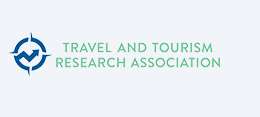Abstract (150 Words)
As most Destination Marketing Organizations (DMOs) are faced with stiffening competition and depleting resources, it requires an agile and reinstituted approach towards the allocation and usage of marketing resources. This paper explores an always-on approach towards destination marketing strategy formulation and execution, leveraging data created through digitalization in the tourism ecosystem. In terms of strategy formulation, the conceptual framework brings together the potential of source markets, the destination’s ability to win, along with the available resources and targets, to dynamically allocate resources to theoretically maximize return on marketing investment (ROMI). For implementation, data-streams are leveraged to allocate marketing budgets to appropriate channels, thereby maximizing the ROMI.
The framework is delivered through a data-driven, dynamic model for resource allocation. The model leverages meta-analyses on existing data streams and transactional information created through digitalization in tourism (i.e., internet-of-things or smart tourism), thereby minimizing the costs related to incremental quantitative or qualitative research.
Maximizing ROMI of DMOs: Enabled Through Tourism Investment Framework and Agile Marketing
As most Destination Marketing Organizations (DMOs) are faced with stiffening competition and depleting resources, it requires an agile and reinstituted approach towards the allocation and usage of marketing resources. This paper explores an always-on approach towards destination marketing strategy formulation and execution, leveraging data created through digitalization in the tourism ecosystem. In terms of strategy formulation, the conceptual framework brings together the potential of source markets, the destination’s ability to win, along with the available resources and targets, to dynamically allocate resources to theoretically maximize return on marketing investment (ROMI). For implementation, data-streams are leveraged to allocate marketing budgets to appropriate channels, thereby maximizing the ROMI.
The framework is delivered through a data-driven, dynamic model for resource allocation. The model leverages meta-analyses on existing data streams and transactional information created through digitalization in tourism (i.e., internet-of-things or smart tourism), thereby minimizing the costs related to incremental quantitative or qualitative research.


